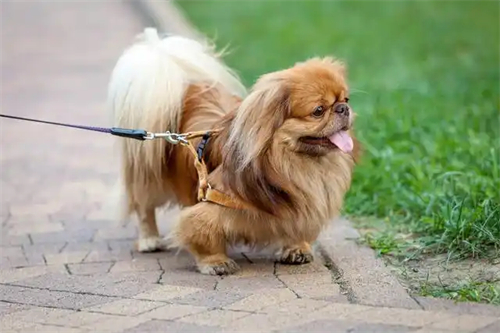Pekingese dogs, known for their regal appearance and loyal nature, can occasionally exhibit aggressive behaviors. While these small dogs are generally affectionate, factors like poor socialization, fear, or health issues may trigger aggression. For pet owners, addressing this behavior humanely and effectively is critical.
 Article source:https://www.petwoah.com/Pet Site-https://www.petwoah.com/847.html
Article source:https://www.petwoah.com/Pet Site-https://www.petwoah.com/847.html
Understanding the Root Causes of Aggression
Before addressing aggression, identify its source:Article source:https://www.petwoah.com/Pet Site-https://www.petwoah.com/847.html
1. Fear or Anxiety: Pekingese may react aggressively if they feel threatened.Article source:https://www.petwoah.com/Pet Site-https://www.petwoah.com/847.html
2. Territorial Behavior: Their strong attachment to owners can lead to guarding tendencies.Article source:https://www.petwoah.com/Pet Site-https://www.petwoah.com/847.html
3. Pain or Health Issues: Undiagnosed conditions (e.g., dental pain) may cause irritability.Article source:https://www.petwoah.com/Pet Site-https://www.petwoah.com/847.html
4. Poor Socialization: Lack of exposure to people, pets, or environments during puppyhood.Article source:https://www.petwoah.com/Pet Site-https://www.petwoah.com/847.html
Pro Tip: Consult a veterinarian first to rule out medical causes.Article source:https://www.petwoah.com/Pet Site-https://www.petwoah.com/847.html
Recognizing Early Warning Signs
Spotting subtle cues helps prevent escalation:Article source:https://www.petwoah.com/Pet Site-https://www.petwoah.com/847.html
- Body Language: Raised hackles, stiff posture, or pinned-back ears.
- Vocalizations: Growling, snarling, or excessive barking.
- Avoidance Behaviors: Hiding, cowering, or refusing eye contact.
Step-by-Step Training Strategies
1. Positive Reinforcement Training
Reward calm behavior with treats, praise, or playtime. Avoid punishment, which can worsen fear-based aggression.Article source:https://www.petwoah.com/Pet Site-https://www.petwoah.com/847.html
Example: Use clicker training to mark desired behaviors like sitting calmly near strangers.Article source:https://www.petwoah.com/Pet Site-https://www.petwoah.com/847.html
2. Gradual Socialization
Expose your Pekingese to new experiences slowly:
- Introduce unfamiliar people or pets in controlled settings.
- Use a leash and harness during walks to manage interactions.
3. Establish Clear Boundaries
Consistency is key. Teach commands like "Leave it" or "Sit" to redirect attention during tense moments.
4. Create a Safe Environment
Reduce triggers by providing a quiet retreat (e.g., a crate or bed) where your dog feels secure.
Preventing Future Aggression
1. Regular Exercise: Short walks and indoor play sessions reduce pent-up energy.
2. Mental Stimulation: Puzzle toys or obedience training keep their minds engaged.
3. Routine Vet Checkups: Monitor for health issues that could affect behavior.
When to Seek Professional Help
If aggression persists, consult a certified dog behaviorist. Look for keywords like "force-free trainer" or "positive reinforcement specialist" to find ethical experts.
Correcting aggression in Pekingese dogs requires patience, consistency, and empathy. By addressing root causes, using positive reinforcement, and prioritizing your pet’s well-being, you can foster a trusting relationship. Share this guide to help other Pekingese owners create happier, safer homes for their furry companions.

